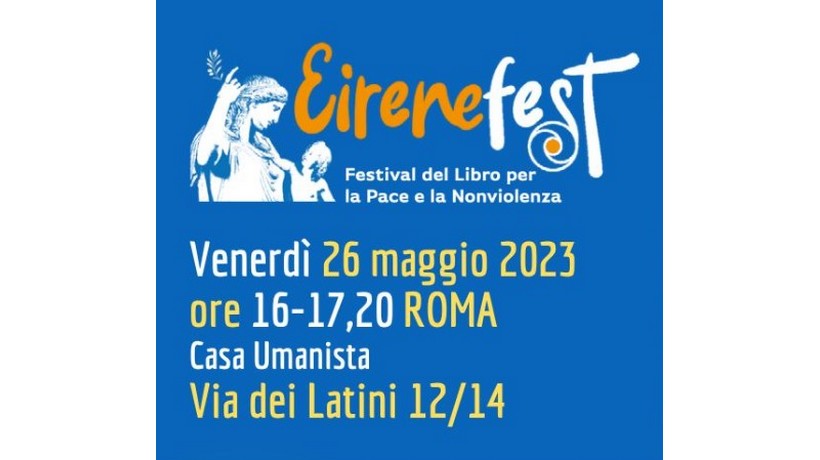Intervention by Philippe Moal (Observatory of Nonviolence)
Good afternoon, everyone,
I would like to thank Multimages, the organisers of the Book Festival for Peace and Nonviolence and its participants, as well as the guests with whom I am sharing this round table.
Since my intervention is both virtual and simultaneously translated (thanks to the translator Cristina Vernizzi), I am going to make a presentation that will not be long, at the risk of being a little schematic.
I will begin by briefly recalling that social change and personal development are two sides of the same coin in any project of nonviolence. Then I will give a brief historical overview of the process of violence and, finally, I will put forward a proposal for a commitment, a kind of manifesto, to the violent society in which we live.
First point
Fundamental changes are needed in the current system, starting with the denunciation and rejection of violence, whatever form it takes. But, at the same time, we need to work on ourselves, to be coherent with our critique of the system, to begin with. That is to say, to accompany criticism with self-criticism of one’s own ideas, values, beliefs and prejudices, for example.
In this way, the non-violent stance stands equidistant between two realities: that of the society in which we live and that of our own individual behaviour, because violence, as you know, infiltrates both collective and personal life.
Second point
According to specialists, organised violence appeared around 12,000 years ago, at the same time as sedentarisation, long-distance trade and metallurgy, which instrumentalised the first wars.
We went from being non-violent hunter-gatherers to another human condition, and patriarchy took over from the long matriarchal tradition, whose origins and non-belligerent nature are now the subject of much interesting research.
And 6,000 years ago, according to the experts, patriarchy took over definitively.
3,700 years ago, in the face of indiscriminate violence and self-righteousness, the Mesopotamian authorities introduced the Code of Hammurabi, which gave the authorities, and only the authorities, the right to use violence and the right to impart justice.
But in return, because violence allowed conflicts to be legally resolved and redressed, it was legitimised and we can think that, at that precise moment, it became normal and natural in people’s minds.
2,000 years ago, the Romans said “Si vis Pacem, para bellum”, “if you want peace, prepare for war”. I am not saying that there is a cause-effect relationship, but what followed were 2 millennia of wars, invasions, colonisations and all the horrors from the point of view of violence.
Today, governments, who talk a lot about democracy, which raises suspicions about their practice, and more than suspicions, are interpreting Max Weber’s theses to justify their right to use violence. They are using brutal force to repress the millions of people around the world who are demonstrating against their arbitrary decisions, based above all on economic criteria.
The powers that be are setting an example. The model has repercussions right down to the social base. Money has become the common denominator of violence, whether physical, economic, racial, religious, sexual, psychological or institutional.
Legally reserved for the authorities, violence has taken over the streets, schools, places of worship, means of transport, and so on. It is once again indiscriminate. Back where we came from.
Third point
We have entered the era of the culture of violence, and in the face of this dominant culture, associated with the all-economy, we can, from experience, put forward the following equation: the culture of money = the culture of violence.
Fifty years ago, the counterculture in the world of art, music, literature and even militancy revolutionised the conservative and sclerotic frameworks of the time.
Today a new counterculture is needed, this time a global one, and we propose a new equation: Counterculture to violence = Culture of Nonviolence = Culture of Consciousness.
Why? Because we know that a person with a disturbed consciousness is capable of the worst atrocities, and we also know that some people are capable of exploiting, discriminating, violently imposing their ideas and beliefs, and even killing, with a clear conscience.
The culture of non-violence is therefore about guiding our own consciousness. With this in mind, here are some proposals, to be developed and expanded, of course:
- To place the human being as the central value in society,
- To challenge the notion that violence is a useful way of resolving conflicts,
- To present war as a crime against humanity, before talking about war crimes,
- Free ourselves and others from the objective conditions that create pain and suffering,
- To make the “I” and the “we” inseparable as a criterion for social emancipation,
- Promote rehabilitation and reconciliation with the past, with oneself and with the enemy,
- Cultivate sharing and mutual aid as fundamental values of humanity,
- To claim the empathic quality in all human beings,
- Communicate on the unique basis of parity and complementarity.
- These are just some of the ideas I wanted to share with you.
Thank you for listening.






